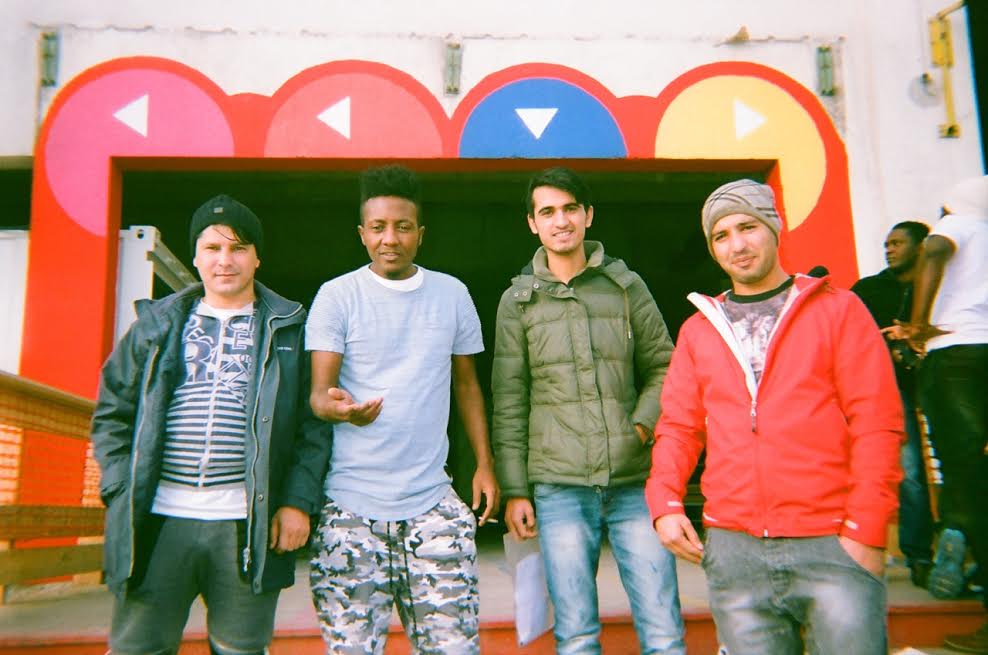In so many ways these could be the snapshots of any group of young people visiting Paris; pictures of friends posing with the Eiffel Tower, trips to the Sacré-Cœur, and views of the Seine. But dispersed amongst these images, visions of life in Paris’ Port de la Chapelle refugee camp brings home the fact that, for these photographers, life is no holiday.
Disposable Perspectives documents the lives of eight refugees living in an all male camp north of Paris. Though disposable cameras were given to fifteen men, seven were lost, in at least one case due to Police brutality.The prints, mounted on a cardboard backing and accompanied by a postcard message from each photographer, provide a personal insight into the global refugee crisis.
Immediately the value of such a project becomes clear; so often we only see distant news coverage of disorder and unrest in refugee camps or fear-mongering propaganda. These eight people’s snapshots of day-to-day life in Paris is a genuinely different perspective of the plight of the people at the heart of it.
What’s most striking is what these men chose to document. There were some pictures of the sprawling tents, reclaimed buildings and the basic amenities that you expect from documentaries of life in camps, but these were far outnumbered by portraits of friends, tourist attractions and streetscapes of Paris.It was almost as if, given the opportunity to capture their experience, they almost unanimously, chose to document the silver linings in a desperate situation.
Some of the photographers even chose to emphasise the beauty of the city they’d found themselves in and the hope given to them by their camera. It was humbling to see that, in spite of their circumstances, they were still choosing to capture the beauty of the sunset over Paris.
Further adding to the mix were the errant snaps of novice photographers; patches of blank wall, fingers partially blocking lenses or two shots of one mans right leg. I’m glad they included these. They were at once slightly ironic, in a ‘wouldn’t expect to see that at a photography exhibition’ sort of way, and added gravity to the event. Leaving the inexperience of the cameramen bare made the rest of the work feel more honest.
Despite the positivity of the images, its clear that the experience of the photographers varied widely. The complaints of lack of food, water and respect registered on individual postcards at once draws attention to how difficult their experience is and contextualises their photography. The physicality of the card and the handwritten testimonies of abuse and disrespect really breaks down the separation between audience and subject, anchoring the whole exhibition.
I do think the exhibition makes it a bit too easy to forget the seven photographers who, through police brutality or otherwise, could not share their stories. Naturally, selection bias has ensured only those who hadn’t had their property broken, lost, stolen or vandalised had their pictures shared. The only space actually used to represent these men was also probably the most powerful of the whole exhibit; a single, blown-up text message explaining that a violent police raid and theft had left one man, Farshad, camera-less.
Walking around St. John’s Barn it was clear that this exhibition is not where Disposable Perspectives ends; this project was developed to leave its audience with a lasting impression and I think its fair to say it did. It was hard not to be moved some of the stories of hope that shone through desperate circumstances.



